| Tuesday - 09 December 2025 | Ard Easmuinn, Dundalk, Co. Louth, Ireland |
| Sacraments |
|
There are seven sacraments in the Catholic Church. They are instituted by Christ to continue his salvific work through the Church. 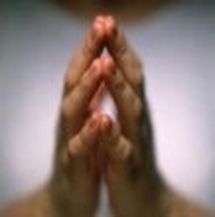 Definition: The following definitions of the sacraments come from the Catechism of the Catholic Church
Brief historical sketch: In the past, there were no strict distinctions as to the number of sacraments. Thus, holy water, the rosary, and others of which we now term as sacramentals (objects, prayers or blessings identified as sacred to Christian spirituality and tradition), are included in the term sacraments. It was only at the Council of Trent in the 1540s that the number of those objects, prayers or blessings that Catholics used to know as sources of God's grace, will be limited to seven sacraments. At the time of their naming, these sacraments were: baptism, confirmation, Eucharist, penance, extreme unction, holy orders and matrimony. Today, we have more modern terms used. The sacrament of reconciliation is a new term used for penance or confession. And, the sacrament of anointing of the sick is used as a Vatican II term for the sacrament of extreme unction. New distinctions: 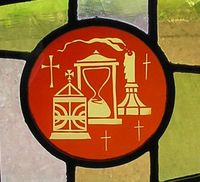 There is a way of ordering the sacraments to show that they touch all the stages and all the important moments of Christian life. First are the three sacraments of Christian initiation: baptism, confirmation and Eucharist. Second are the sacraments of healing: penance and anointing of the sick. And third, are the sacraments at the service of communion and the mission of the faithful: matrimony and holy orders. These sacraments in the Christian life flow over into the experience of natural life such as birth, maturation, sustenance, sickness and death, love and marriage, and commitment and leadership. There is a way of ordering the sacraments to show that they touch all the stages and all the important moments of Christian life. First are the three sacraments of Christian initiation: baptism, confirmation and Eucharist. Second are the sacraments of healing: penance and anointing of the sick. And third, are the sacraments at the service of communion and the mission of the faithful: matrimony and holy orders. These sacraments in the Christian life flow over into the experience of natural life such as birth, maturation, sustenance, sickness and death, love and marriage, and commitment and leadership.The Seven Sacraments Baptism: 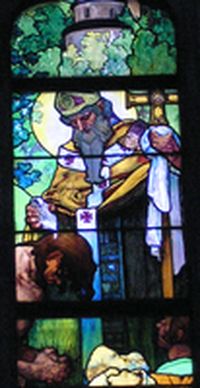 In the early centuries, baptism was done for adults as conversions naturally occured among adults. However, when Christians multiplied, and the question of salvation arose for the death of an unbaptized baby, infant baptisms were introduced. Today, with the reintroduction of adult baptisms through the RCIA (Rite of Christian Initiation for Adults) program, both infant and adult baptisms are done in conjunction with one another. Confirmation (Chrismation): In the early centuries and in the tradition of the Eastern Churches, baptism and confirmation were considered as one sacramental act. Over the centuries, in the Latin rite, they were eventually considered distinct from one another and were considered sacraments in their own right. Baptism came to be known as a "birth" into the new life of the Christ and the Christian community and confirmation came to mean as a strengthening of the grace received at baptism in order to mature as "soldiers of Christ": doing good and fighting against evil in the journey of the Christian life. Penance (Sacrament of Reconciliation): It was the Irish monks of the early centuries who popularized individual and private confessions. Before, especially in the early Christian eras, public confession and penance was more the norm. Now with Vatican II teaching, the sacrament evolved into one that focuses on reconciliation rather than penance. There is now a celebration of the sacrament in both communal and private forms. In the communal form, the priest gives a general absolution to all who attend and those who have serious sins are required to confess their sins individually. In the private form, more and more, the traditional confessional box is being replaced by reconciliation rooms whereby those who confess encounter Christ's mercy and forgiveness through a face-to-face absolution and laying of hands by the priest on the penitent. Eucharist: Now known as the "Sacrament of sacraments", (CCC #1211), the Eucharist occupies a unique place because "all the other sacraments are ordered to it as to their end." (CCC #1211). 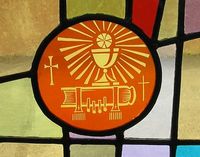 The Eucharist has its origin in the Last Supper accounts of the gospels, where the Lord Jesus gave His Body and Blood in a Passover Meal together with His apostles. From then on, the form the Eucharist was celebrated has evolved through the centuries of Catholic tradition. For a long time, Latin was the liturgical language used, since this was the language of the Roman Empire - from which the Christian faith grew into after it was officialized by the Emperor Constantine in 313 AD. Today, after Vatican II Council, the vernacular or local language of the people replaced Latin as the language used in the celebrations of the Eucharist all over the world. The Eucharist has its origin in the Last Supper accounts of the gospels, where the Lord Jesus gave His Body and Blood in a Passover Meal together with His apostles. From then on, the form the Eucharist was celebrated has evolved through the centuries of Catholic tradition. For a long time, Latin was the liturgical language used, since this was the language of the Roman Empire - from which the Christian faith grew into after it was officialized by the Emperor Constantine in 313 AD. Today, after Vatican II Council, the vernacular or local language of the people replaced Latin as the language used in the celebrations of the Eucharist all over the world.Anointing of the Sick:
In the early centuries of this sacrament, it was often given by the clergy to those who were at the brink of death or those who were dying after being tried by terminal illness. Thus, it came to be a sacrament associated with death rather than healing from sickness. With the new teaching of the Second Vatican Council, the sacrament is given to those who are seriously ill. Whereas in the previous understanding, the sacrament was only given once before death, the new understanding and action of the sacrament is to strengthen those who are seriously tried by illness. This new understanding thus means that it can be given more than once. 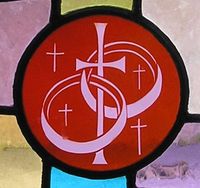 Matrimony: The sacrament of marriage or matrimony has not really differed from the way it was originally instituted by Christ. The only difference in today's controversial times are the same-sex unions which desire to elevate their union at the same level as marriage and matrimony. As has always been the truth, wisdom, and tradition of Christian living, marriage is to be a unitive and procreative indissoluble bond between a man and a woman. Holy Orders: Holy Orders is the sacrament that consecrates a man to a special service of leadership in the Church: the clerical state of life. There are three levels of clerical life: the diaconate (deacons); the presbyterate (priests); and the episcopate (bishops). As of recent developments after Vatican II, the permanent diaconate or permanent deacon was reintroduced and became popular again. Also, those married clergy from other Christian churches who becomes part of the Roman Catholic clergy, retain their married state. To learn more about the sacraments from official documents of the Church, you can search the Vatican website |

